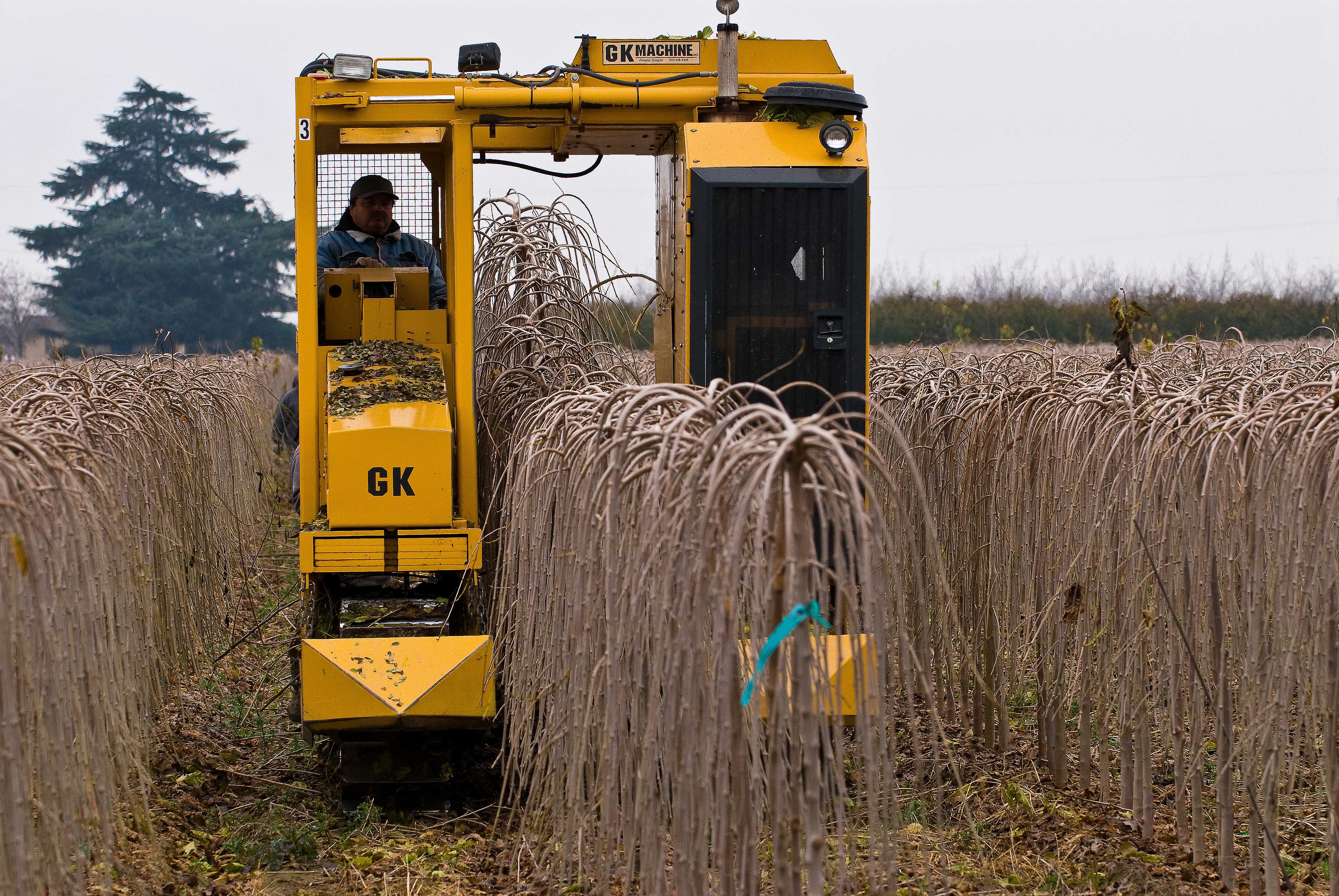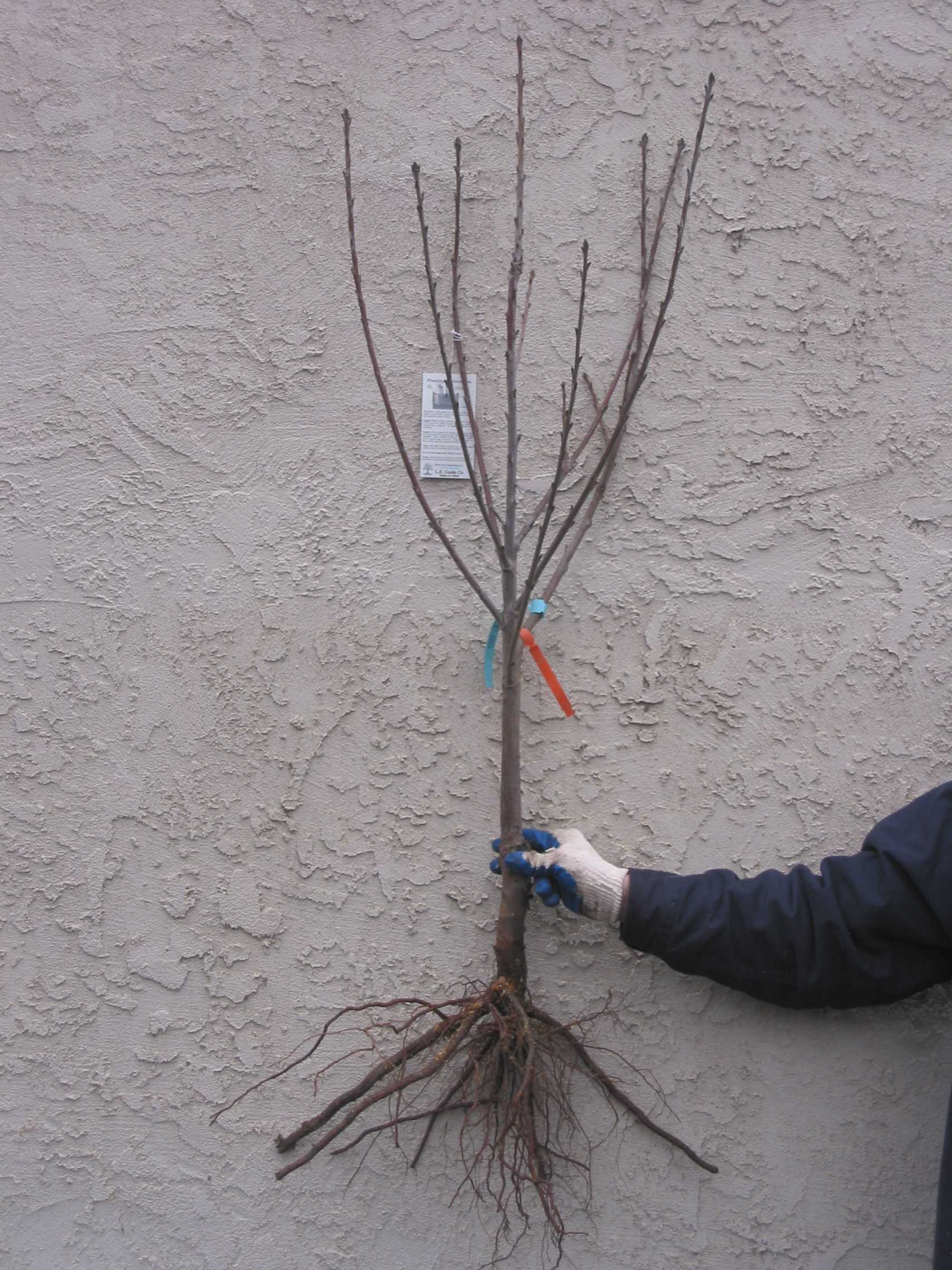The Bareroot Season: the gardening year begins
I had the only European white birch tree in my neighborhood, and I hauled it home on the bus. When I was a teenager I got to choose a tree for my yard. My friends and I rode the bus downtown to Walter Andersen Nursery, the largest nursery in San Diego. January!
Bareroot season! There were bins of roses, fruit trees, and shade trees heeled into shavings. Deciduous trees aren't common landscape items along the coast of Southern California. Palms, Norfolk pines, and eucalyptus predominate. But the pictures of soft green foliage and clean, papery white bark enchanted me. I looked for the biggest tree I could buy with my gardening allowance and found a ten-foot tall birch.
The nurseryman yanked it out of the shavings, wrapped the roots, and rang up my purchase. Then he stunned me by whacking the top of the tree off. More on that later. The bus driver looked askance as we boarded, then decided to charge me an extra fare (25 cents) for the tree. Planted in the middle of my meadow (the former lawn, which I no longer mowed), my Betula pendula grew five feet a year, flourishing in the midst of all the subtropicals I had planted, looking about as out of place (and about as white) as the tourists at our local beaches.
Californians may be startled to learn that nursery plants in much of the rest of the country are grown in dirt, in fields, whence they are dug up and wrapped in burlap and wire for sale. Here most of our nursery plants start their lives in greenhouses and are then move into pots in specially formulated potting soils, sitting on clean beds of gravel. But deciduous fruit trees, many shade trees, and nearly all roses are still field grown.
The arrival of bareroot trees and shrubs in January marks the beginning of the planting season. Nowadays many nurseries pot the roses and fruit trees as soon as they arrive. But some still stow them in shavings or sand to sell for a few brief weeks before warm weather breaks the dormancy.
The sandy river-bottom soils on the east side of California's Central Valley are perfect for production of deciduous trees and shrubs. Growers plant the rootstocks a few inches apart, then graft or bud on the desirable fruit or shade varieties in spring. In a season or two, the tree is ready for harvest. As soon as the trees are dormant, specialized machines dig them up, sans soil (hence "bare root"), and teams of fieldworkers sort, stack, and bundle them. Within weeks millions of trees are being shipped all over the country and overseas for orchards and home gardens.
There are just a few major growers of bareroot fruit and shade trees in California. All produce large quantities of commercial varieties of stone fruits, pome fruits (apples and pears), and nut varieties for orchards, and each has found a special market niche. Based on figures from five growers, 8 - 10 million trees are grown and shipped annually. Take that, global warming! Some grow only for commercial orchards, but two split their product lines between orchards and home gardens. These are venerable businesses. The youngest, Sierra Gold Nurseries, is 58 years old; Fowler Nursery in Newcastle will be 100 years old in 2012!
Dave Wilson Nursery (1938) in Hickman (east of Modesto) sells specialty fruit trees, working to broaden the ripening periods and expand the fruit palette. Their collaboration with Zaiger Genetics has led to "150 or so" varieties, says former sales manager Ed Laivo (now retired): white and miniature peaches and nectarines, unique hybrids such as apriums and pluots (apricot/plum hybrids), a new nectarine/plum hybrid, and more. The name notwithstanding, Zaiger Genetics uses conventional hybridizing techniques (not genetic engineering), hand-pollinating and back-crossing and rigorously evaluating tens of thousands of seedlings.
What's new on the horizon? How about the peacotum? (peach - apricot - plum, rhymes with bottom.) Crosses between peach, apricot, and plum, Zaiger and Dave Wilson have test varieties "maybe to introduce in 2010, we'll see," says Laivo, adding that the flavor is "out of this world." Laivo is well-known in nursery and gardening circles for his tireless promotion of backyard orchard techniques, whereby home gardeners plant trees close together, prune severely to reduce fruit production, and do major pruning in summer for size control.

Field workers at L.E. Cooke Co. digging weeping mulberry trees. Photo courtesy of L.E.Cooke Co./Ron Ludekens.
L.E. Cooke Co. (1944) in Visalia grows fruit varieties as well as shade trees and ornamentals. A few years ago they pioneered a new training technique in field production of fruit trees: young trees are cut back once as they grow, leading to lower branching and easier access to the fruit. These EZ-Pick® trees have changed the look of what you buy: instead of an unbranched "whip" you can now get a shrubby, multi-branched plant. L.E. Cooke also grows many weeping trees: cascading varieties are grafted high up onto a rootstock to create unique garden specimens.
What is the advantage of bareroot?
What you get in the bareroot season is the biggest root system at the lowest price. The roots are so big, they have to be pruned to fit in containers. Properly planted and watered, a bareroot tree establishes faster than a container-grown tree. This is when nurseries have the largest selection of fruit tree and rose varieties.Should I prune it?
No. The nurseryman I bought my birch tree from was old school; in the past bareroot trees were topped to "bring the tops and roots in balance." Research has found that the young trees establish better if the top is left unpruned at first. The more leaves you have, the faster the roots will grow. Pruning to train the tree can begin in the first winter after planting.What do I do with this tree until I can plant it?
Keep it moist! The roots should be kept in moist shavings, potting soil, or compost. Water them daily, and sprinkle the top as well. Plant ASAP!
Pruning out the central leader during field production leads to a low-branched tree, which makes it easier for the homeowner to control the size and pick the fruit.
How do I plant this thing?!
Dig a hole wide and deep enough to accommodate the roots without bending them, typically 3' wide by 18" deep. The graft union should be out of the ground a couple of inches. You can add fertilizer to the backfill, but don't add compost.Backfill, firm the soil, then soak the tree thoroughly. Tug it up a little if it settles. You don't want the graft buried, and you don't want the tree in a low spot. It should be "crowned up" an inch or so.
Make a basin for watering by pulling excess soil to form a ring around the tree. Water thoroughly again.
When it is dry, paint the trunk with an interior white latex paint, up to the first branches to prevent sunburn on the bark.
My watering advice for this area: give the tree one gallon of water every day until it leafs out and starts to grow. You don't need to water on rainy or foggy days. Then gradually water less often and more deeply. By May - June you should be able to have it on your regular watering cycle. The crucial watering time is March to early April, when we first get dry and warm. Don't let those fine root hairs dry out! A north wind in March kills lots of young bareroot trees.
What to choose?
The bins of bareroot trees can be a little overwhelming. There may be a dozen or more types of peaches, for example. Scores of roses. Lilacs, wisteria, flowering cherries, flowering plums, crabapples; shade trees. Nearby you may find artichokes, asparagus, rhubarb, strawberries, and even horseradish.What's easy to grow?
Pomegranates, persimmons, and figs. Just plant, water, and wait. No pruning needed. All are tolerant of drought, but are not particularly susceptible to rot so they can be in a garden or even in or near a lawn. Cherries are very easy except for sensitivity to rot. No pruning or spraying needed.But don't shy away from the other fruit varieties. Home orchard care is not difficult: some seasonal pruning and possibly some spraying. Organic options are available for the occasional pest problems. We are fortunate to live in an area where you can grow all the major types of stone fruits (apricots, peaches and nectarines, plums, pluots), the pome fruits (apples et al.), Mediterranean and Asian fruits, and more.
Factors in selecting a variety include flavor and ripening period, ease of size control, pest problems, chilling hours, and cross-pollination requirements, if any.
What about citrus?
Citrus trees may be available now, but not bare root as they are evergreen. It is an ok time to plant them, but warmer weather is optimal. Look for best selection of citrus in spring and summer. For more information: Dave Wilson Nursery L. E. Cooke Co. For a ripening chart, showing how to get fruit from your back yard year round: click hereJargon: what's all this stuff on the label?
Semi-dwarf
I am getting away from this term as it is misleading. Some rootstocks make a tree grow more slowly. But they don't (usually) keep the tree much smaller than a regular rootstock. You determine the size of the tree by how you train and prune it. Exceptions: there are some extremely dwarfing rootstocks for apples that keep the plant miniature, small enough to grow in a tub or barrel. "Genetic dwarf" (miniature) varieties are available for peaches and nectarines, and there is a dwarf almond.Rootstock
There are specific rootstocks for certain situations: nematode-infested soils, poor drainage. Mostly these are for commercial plantings. You may want to ask locally if you have a need for special rootstocks. If you ask me, the answer will be 'no'. If drainage is an issue, elevate your planting. If you want a smaller tree, prune it.Pollenizers and pollinators?
"Pollenizer required." A few fruit varieties are self-sterile, either completely (Bing cherry) or partially (many apples). So they require the presence, within bee-flying distance, of another type which blooms at the same time. Not another tree of the same variety, but another variety. It can be in your neighbor's yard, or even a couple of doors away.Apricots, peaches, nectarines, etc., are mostly self-fruitful.
Plums and pluots are complicated, so check before you buy, but there are some self-fruitful plums.
Some pears and apples are partially self-fruitful, and others will produce fruit without a pollenizer in our area but require one elsewhere.
The bee is the pollinator.
Chilling hours?
Deciduous fruit trees need a certain number of hours between 32 - 45F to break dormancy and develop their flowers properly. Too low chilling, the flowers don't open right. Low-chill varieties planted in cold areas may break dormancy too early, and try to flower while frost could still occur and damage the blooms. For more information on chilling hours, check out the UC Cooperative Extension Fruit and Nut Research and Information Center Website: http://fruitsandnuts.ucdavis.eduwritten for the Davis Enterprise January 29, 2009

We often find trees planted in bark here in Oregon at some of the nurseries.
ReplyDeleteGreat Info, It will help a lot in my garden tree lopping in newcastle.
ReplyDelete